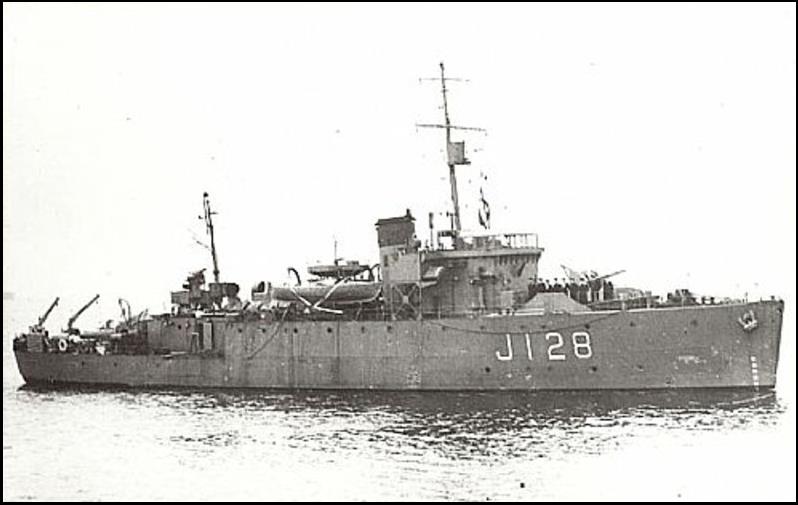With the clouds of war gathering on the horizon, a new design of escort of 600 tons was promulgated that could be speedily built in time of war. Thus was born the Bangor class. The need for fast construction coupled with the limitations of engineering resources resulted in several variations existing based on the availability of propulsion machinery. They all had twin screws, but the machinery was a mix of steam turbine, slow-speed steam reciprocating, high-speed steam reciprocating, and diesel. Displacement varied with propulsion machinery from 600 to 670 tons. The reciprocating engine powered type were the Bangor class, the diesel engined version were known as the Blyth class and the steam turbined ones as the Ardrossan class. The New Zealand navy built ships were the Bird class. The Australis equivalent was the bigger Latrobe Class.
The ships were to be inshore escorts and minesweepers, ideal for around the coasts of Great Britain, the Mediterranean, Caribbean, and other coastal areas. They were not built for the open seas of the major oceans. But as with the other escorts, they ended up serving everywhere in WW2, from the Atlantic and Arctic to the wide open Pacific ocean. A New Zealand pair of these vessels (HMNZS Kiwi and Moa) sank one of the huge aircraft carrying submarines of the Japanese - I-1.
.png)
Their small size gave them poor seakeeping abilities, reportedly
worse even than the (real world) Flower class corvettes.
The diesel-engined versions were considered
to have poorer handling characteristics than
the slow-speed reciprocating-engined
versions. Their shallow draft made them
unstable and their short hulls tended to
bury the bow when operating in a head sea.
The only cure would have been a bigger hull, but that would have required a
complete redesign, which in the middle of a war with numbers being everything,
no delays could be contemplated. In service, their small size made it difficult
for both acoustic and magnetic minesweeping gear to be carried.
The armament varied from ship to ship
with 3" to 4" main guns and anything from 0.5" machineguns
to 20mm Oerlikons for AA guns. The original
3" gun was a low angle weapon, and was replaced by a 4" dual purpose gun in
most.
72 were built between 1937 to 1942. The class was discontinued in favour of the
larger Algerine class.
| Displacement | 600 tons std, 710 tons full load. | |
| Length | 162 ft | |
| Breadth | 28 ft | |
| Draught | 8 ft | |
| Machinery | 2 shaft Triple Expansion, 2,000shp | |
| Speed | 16 knots | |
| Range | 2000 miles at 10 knots | |
| Armament | As completed 1 x 3" (1x1) 4 x 0.5"mg (1x4) |
Upgrade/Refits 1 x 4" (1x1) 2 x 20mm (1x2) |
| Complement | 60-63 | |
| Notes | ||
